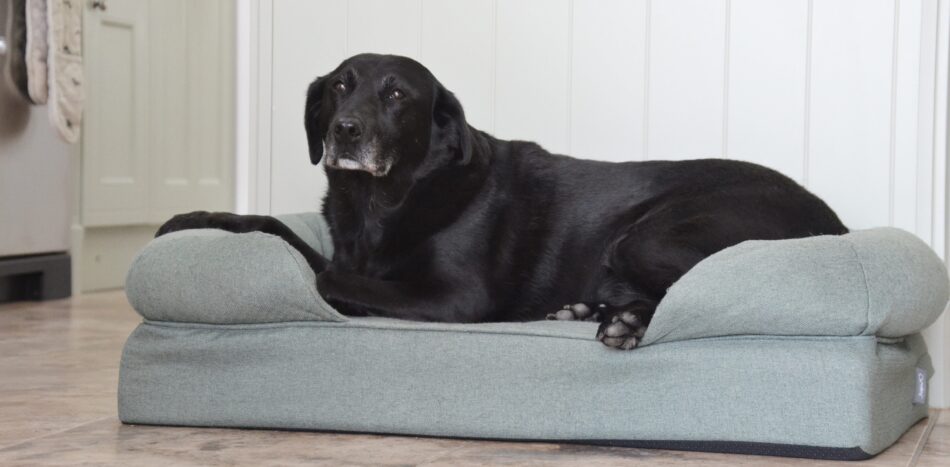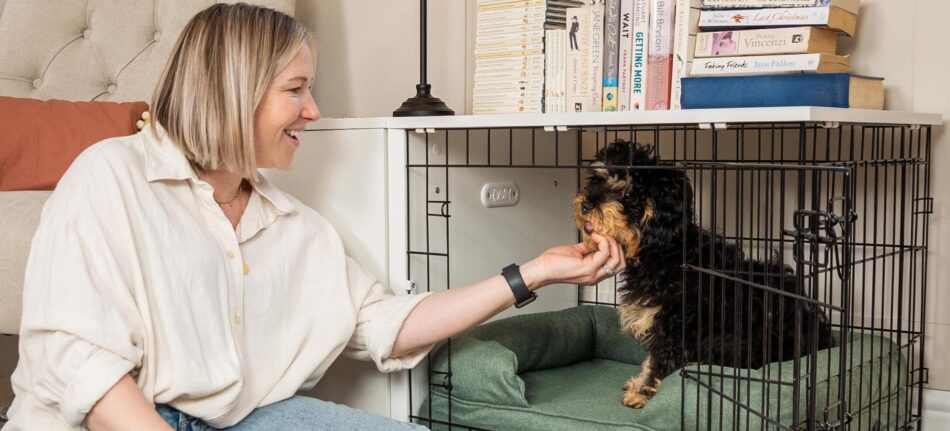How old is your dog actually in human years?
Have you ever wondered if your dog is older than you in human years? If you’re like most dog owners, you’ve probably come across the rule that one year for your dog equals seven human years. But this rule is actually far from accurate and the math is not that simple.
The notion that one dog year is equivalent to seven human years has been regurgitated more than chew toys. But calculating a dog’s age in human years is dependent on so many other factors. What breed is your dog? Is your pup big or small? All of these details matter when converting dog years to human years.
So if you want to really find out how old your 4-year-old Shar Pei is in human years, follow along as we debunk the myths and uncover the facts.
Where did the “seven-year rule” come from?
While the exact origins of the 1 to 7-year rule for dogs to humans are not completely known, we do have a few examples dating back to the 1200s on how it came to be. In 1268 a “Judgement Day” calculation was inscribed on the floor at Westminster Abbey stating that humans live to the age of 81 and dogs live to the age of 9. But that’s a 9:1 ratio? Correct. Keep reading.
Then in the 1700s, Georges Buffon, a French Naturalist, created the theory that humans live to 100 and dogs live to 10. Ultimately claiming that the dog-to-human year ratio was 10:1. Ok, but that’s still not 7:1 – how did we get to that conclusion? Stay with us.
It wasn’t until almost a quarter of a century later in the 1950s that the rhetoric concerning the average age of humans changed. The new human lifespan was estimated to be age 70. Ironically, the average lifespan of dogs still maintained to be an average of 10 years. So it was around this time in history that the 7:1 ratio of dog life to human years was created. Veterinarians and pet owners quickly adopted this rule of thumb and so became the “seven-year rule” on calculating dogs’ age in human years.
How do you really calculate dog years into human years?
One fact that researchers, scientists and veterinarians can all agree on is that dogs age considerably more rapidly in their first year of life than at any other time. Especially compared to humans.
The American Veterinary Medical Association (AVMA), which represents more than 100,000 vets, has heavily researched the topic of dog aging and concluded a new standard. They evaluated specific dog breeds and sizes to come up with a sliding scale of the average aging process of dog to human years. Here’s what they concluded:
- For all dog breeds and sizes, the first year of their life is equivalent to 15 human years. This explains why one-year-old puppies act a lot like human teenagers!
- Based on size alone (large dog vs small dog), the second year of every dog’s life is equivalent to approximately 9 years. So by the time your Dachshund is 2 years old, they’re legally (in human years) able to drive you to work – although we don’t recommend that!
- Every year thereafter, dogs can age anywhere from 4-7 human years for every dog year depending on breed and size. This means giant breeds like Newfoundlands could be pushing 40 in human years by the time they turn 4 in dog years.
Do smaller dogs live longer than larger dogs?
In the wild, larger animals like elephants and whales, tend to live longer than their smaller counterparts, like mice. However, in the canine world, this phenomenon is the opposite. While there are exceptions to every rule, it’s widely known that smaller dogs tend to live longer than larger dogs.
But why? Scientists don’t have any definitive answers to explain this reality, but there are some assumptions that try to answer the question. Plain and simple, larger dogs age and grow faster. And as their bodies grow, so, too, do the proteins that make up the molecular structure of their bones and organs. While there’s no concrete evidence, many scientists believe that this faster rate of protein production could be a cause of a shorter lifespan in bigger dogs.
Faster aging in bigger dogs isn’t the only explanation, but there is a tendency for larger dogs to have more health problems as compared to smaller dogs. Developmental disorders in the musculoskeletal and gastrointestinal areas are more prone to be prevalent in bigger dogs and this is linked to their accelerated aging and growth. Think about a Great Dane as an example. At birth, these giants are already 10 times the size of their pint-sized pup counterparts.
How Omlet can support your dog’s healthy lifestyle
Just like humans, the makeup and genetics of dogs are a huge factor in the length of life they live. And while there isn’t anything we can do to course correct their DNA, there are a few things, and many products, that can be utilized to make sure the life your dog lives is a healthy and happy one.
- Well-balanced diet: You can never go wrong feeding your dog a healthy and nutrient-rich diet. As humans, we often live by the phrase, “you are what you eat”, and the same is true for dogs. So be sure to give your dog a healthy meal every day. Using an environmentally safe dog bowl will support your dog’s health regardless of their age.
- Move those muscles: Active dogs are healthy dogs and the more they exercise, the healthier they will be. Just be cautious and don’t overdo it as some breeds are more prone to join injuries. Some dog breeds are more prone to joint injuries than others. Moderate walks and games of fetch are always great ways to get your dog physically moving. But be sure to incorporate play with stimulating dog toys as well to get those doggy minds happy and healthy, too.
- Comfort is key: What’s the number one thing that helps humans live longer? Sleep. And while there’s no link between sleep and a dog’s aging process, there’s no denying they have their paws on the pulse of slumber. So why not make sure they have the ultimate comfort when snoozing. A supportive and memory foam mattress like Topology, designed by Omlet, is the perfect dog bed for any size pup or breed. Add a super soft dog blanket and your pup will be living their best life..
All dog owners can agree that our pups may not make up our whole lives, but they definitely make our lives whole. Understanding how and why they age is the first step in making sure the time we do have with them is the best for both of us. Whatever the age of your dog, one thing’s for sure – Omlet is here to provide you with all the products you need to give your dog the best life possible.
This entry was posted in Dogs

